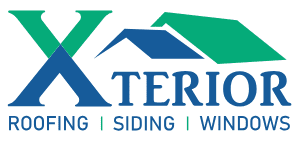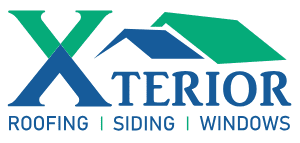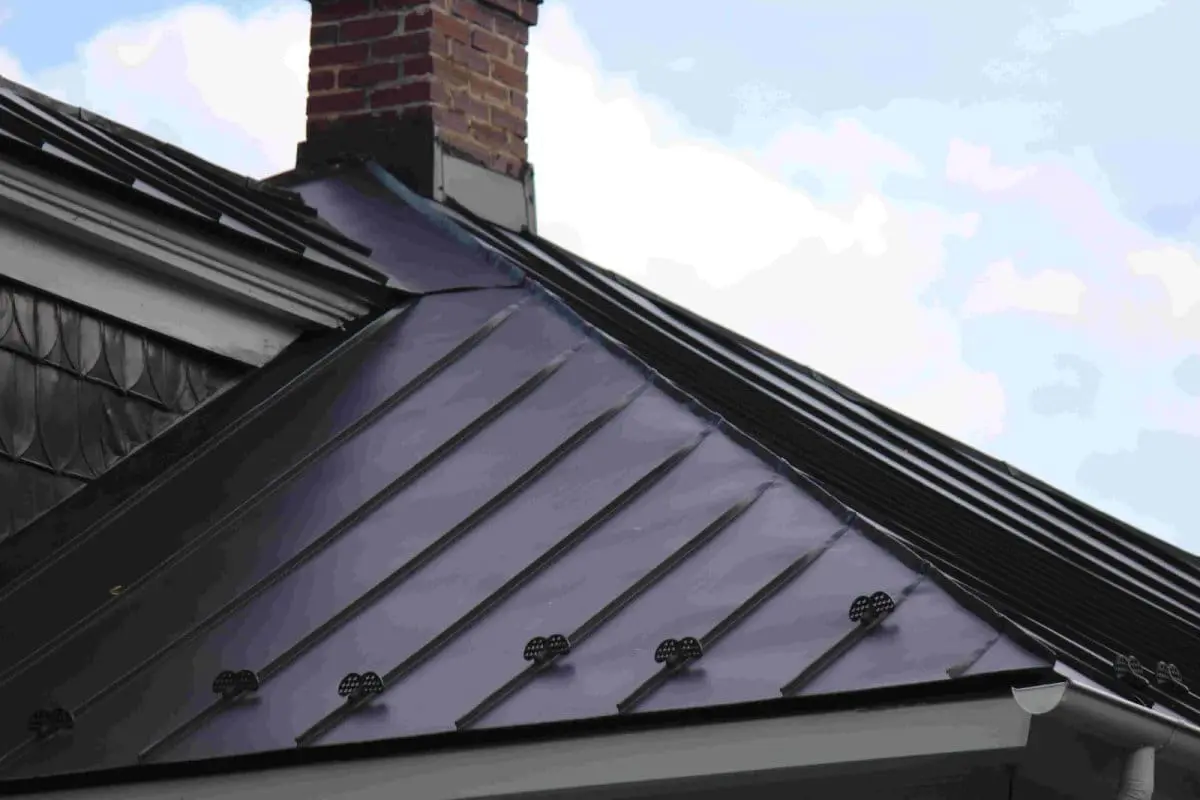Got a leaky roof? You’re not alone. Roof leaks can cause major damage if not addressed quickly. In this article, we will cover essential roof leak repair tips.
From identifying the source of the leak to temporary fixes and DIY solutions, we’ve got you covered.
Let’s dive in and protect your home from further damage.
Key Roof Leak Takeaways: Early Detection & Temporary FixesKey Takeaways
- Identifying the source of a roof leak early is key to preventing significant damage; look for water stains and inspect areas like skylights and chimneys.
- Immediate actions like catching dripping water and moving valuables can minimize damage until permanent repairs are made; temporary fixes like tarps and roofing cement can help in the meantime.
- Regular maintenance and inspections of roof flashing and shingles are essential to prevent a leaky roof and extend the roof’s lifespan; know when to call a professional for significant issues.
- Xterior LLC is a trusted roofing company offering expert roof replacement, repair, and storm damage restoration services in North Carolina.
Identify the Roof Leak Sources
Finding the source of a roof leak is crucial in addressing the problem. The first sign of a roof leak is often a water stain on your ceiling or walls. These stains are not only unsightly; they indicate that water is seeping into your home, which can lead to significant damage if left unchecked.
A thorough inspection of your attic ceiling might reveal a lot about where the water is coming from. Generally, you should look for water spots or tracks on the roof decking and wet areas in the insulation. Common sources of leaks include roof joints, corners, and areas around skylights and chimneys. Missing or damaged shingles are also major contributors to leaks, as they disrupt the roof’s protective barrier, allowing water to seep through.
Now, pinpointing the precise location of the leak can be challenging. This is because water often travels along the roof structure before dripping, complicating the search for the actual leak source.
Common Causes of Roof Leaks
Roof leaks can occur due to various reasons, and understanding these can help you prevent future issues. Here are some common causes:
- Missing or damaged shingles: Shingles are your roof’s first line of defense against water. When they are missing or damaged, water can easily seep through.
- Damaged flashing: Flashing covers roof joints and seals openings around chimneys and vents. If it’s damaged, water can enter your home.
- Clogged gutters: When gutters are clogged, water can back up and overflow, seeping into the roof and causing leaks.
- Ice dams: On steeply sloped roofs, ice dams can form, causing water to back up and penetrate the roof.
- Animal infestation: Animals like birds and squirrels can damage roofing materials, leading to leaks.
- Poor roof installation: A poorly installed roof can have numerous weak points where water can enter.
- Aging roof: Over time, roofing materials can wear out, making your roof more susceptible to leaks.
By being aware of these common causes, you can take proactive steps to maintain your roof and prevent leaks.
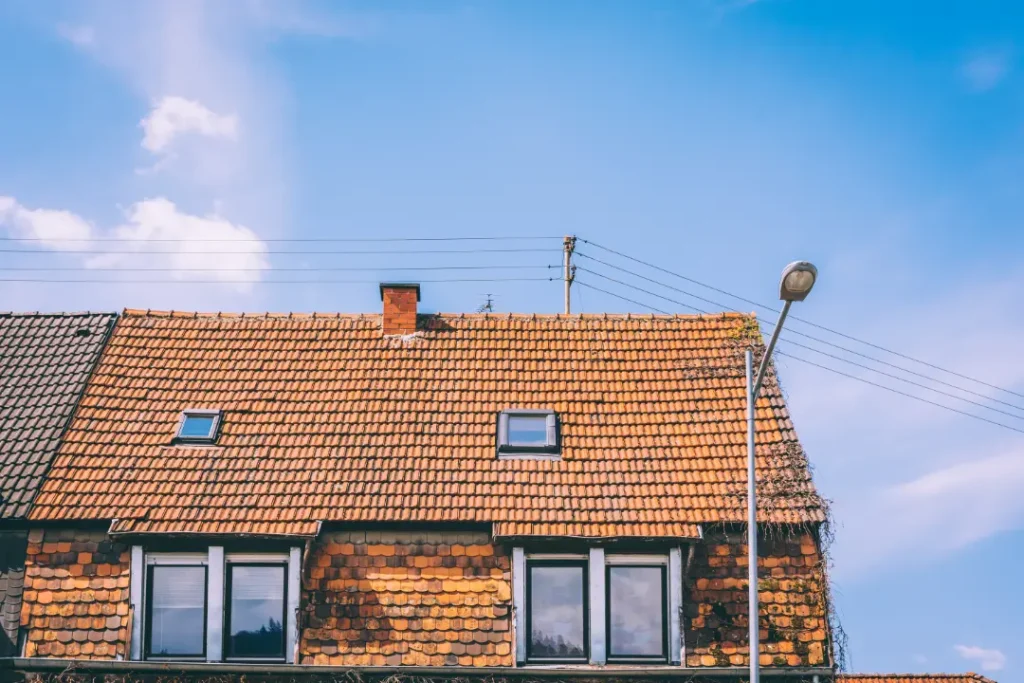
What Are the Immediate Actions for Leaking Roofs?
If you discover a leaking roof, it’s crucial to act quickly to minimize water damage. Begin by placing buckets, garbage cans, or any large containers beneath the leak to catch the dripping water. This simple measure can help prevent water from pooling on your floors and causing additional harm.
Next, protect your home’s interior. Move furniture and valuables away from the leak, and consider covering surfaces with waterproof materials to shield them from moisture. If you observe a bulging ceiling, carefully puncture the lowest point to relieve pressure. This will allow trapped water to escape, reducing the risk of a ceiling collapse.
Make sure to regularly empty the containers collecting water to prevent overflow and additional mess. Taking these immediate actions can help mitigate the impact of a roof leak and provide you with some time to arrange for permanent repairs. Even a small leak should be addressed promptly to avoid further damage and escalating repair costs.
Temporary Fixes for Roof Leaks
Dealing with a leaking roof can be stressful, but temporary fixes can provide crucial relief until a permanent solution is implemented. One effective method is to use a tarp. Simply cover the affected area, tuck the tarp under the shingles, and secure it with roofing nails. This creates a barrier that helps prevent water from infiltrating your home.
Another useful option is to apply roof cement. This versatile material can seal small leaks and cracks, offering an efficient solution. Additionally, roof sealant is a great alternative, as it adheres well even in damp conditions. To use it, simply apply the sealant to the damaged area for a watertight seal.
In cases of urgent need, plastic sheeting can also be very effective. It helps block water from entering your home until more permanent repairs can be arranged. These temporary solutions not only provide immediate protection but also help you avoid costly repairs and further damage while you plan a more lasting fix.
DIY Tips for Small Leaks
Addressing a small leak yourself can be a cost-effective and immediate way to prevent further water damage. Simple methods like using roofing adhesive, caulk, and patching materials can be highly effective. For very small holes where flashing isn’t an option, caulk is a suitable solution, effectively sealing exposed nails or small gaps.
For a stronger seal, combine roofing adhesive with caulk. This method is particularly useful for a small leak that needs a tight, watertight seal. If you encounter tiny holes in shingles, injecting roofing caulk or using metal flashing can be an excellent repair method. These DIY methods can reducing the risk of further leaks and damage while you get a roof leak repair expert.
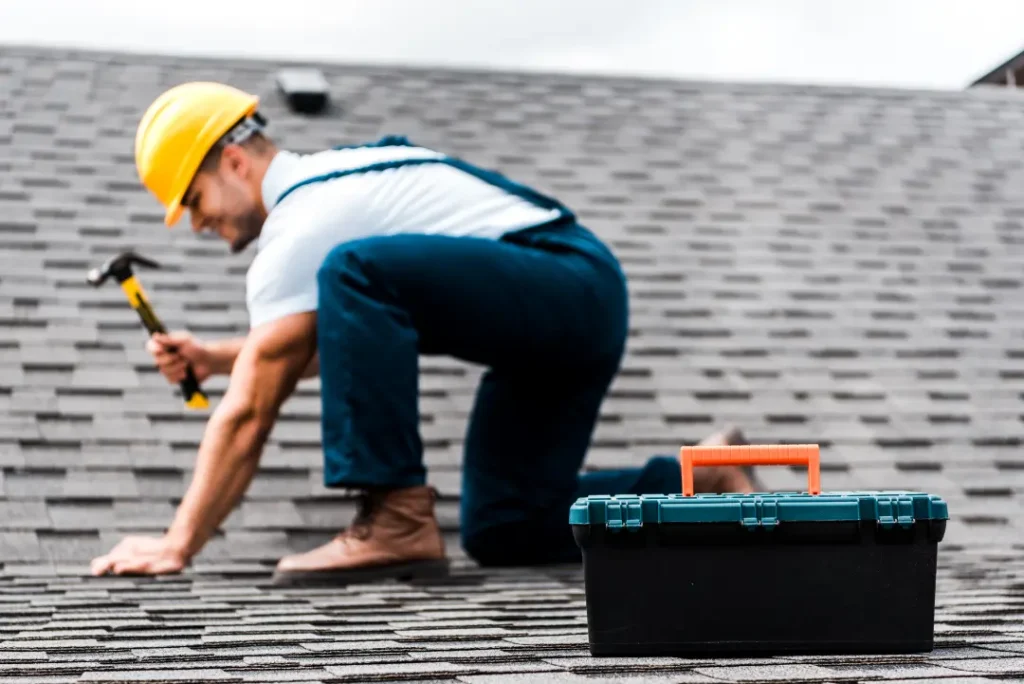
Common Tools and Materials You Will Need
To effectively repair a roof leak, having the right tools and materials is crucial. Here’s a list of essentials:
- Roofing cement
- Patching compound
- Roofing nails
- Flashing
- Shingles
- Safety gear
- Ladder or scaffolding
Having these tools and materials on hand will make your roof repair process smoother and more efficient.
Roof Repair Tips for Damaged Shingles
Dealing with a damaged shingle is a common task for homeowners, but it can be managed with the right tools and techniques.
Generally, the essential tools you will need for replacing shingles include a flat bar, asphalt roofing cement, replacement shingles, and roofing nails.
Start by using the flat bar to lift the damaged shingle and remove the nails holding it in place. The next step is to place the replacement shingle and safely nail it down.
After nailing down the new shingle, apply sealant around the nails to prevent water leakage. Using a high-pressure pneumatic nail gun can speed up the process and ensure secure fastening. Use waterproof roofing nails for durability.
If you do it right, this will not only fix the immediate problem but also help maintain the overall integrity of your roof, prevent further damage, and extend the life of your roofing system.
Tips for Fixing Leaks on a Flat Roof
Fixing leaks on a flat roof requires a unique approach compared to repairing steeply sloped roofs. Of course, the first step as always is to locate the source of the leak. One effective method is to use a hose to mimic rainfall, while observing where the water seeps through. Once the leak is identified, you must clean the surrounding area to ensure a strong and lasting seal.
After cleaning, apply roofing cement directly to the leak. This adhesive works effectively to fill small gaps and cracks. For added protection, you may consider placing a patch over the leak, reinforcing the area, and providing extra coverage against future leaks. Be sure to seal the edges of the patch thoroughly to prevent any potential water entry.
By following these steps, you can successfully address and repair leaks on a flat roof, safeguarding your property from further damage.
Preventative Roof Maintenance Tips
Preventative roof maintenance is your best defense against leaks and water damage. Clearing debris from the roof and gutters is essential to prevent future leaks and water pooling. Regularly clearing gutters prevents clogs that can cause water damage to the roof. A clear gutter system helps the roofing system to remain efficient and functional, prevent water damage, and maintain curb appeal.
In addition to the gutters, routine checks are also essential for assessing the condition of shingles, including identifying any that are loose or curling. Regular inspections, particularly after severe weather, can help catch potential issues before they escalate.
While regular maintenance offers immense benefits, choosing the right roofing materials is crucial to preventing leaks. Always consider durability, water and UV resistance, cost, and aesthetics to ensure long-lasting protection and a style that complements your home.
Roof Flashing Maintenance
Regular inspection and maintenance of roof flashing are essential to prevent leaks and identify potential weaknesses before they cause significant damage. Flashing seal openings around chimneys, vents, and roof joints, keeping water out. Ensuring your flashing is intact and functioning properly can save you from expensive repair bills and further damage.
Inspect flashing areas regularly, particularly around chimneys and vents. Look for signs of damage or wear, such as cracks or loose sections.
Address any issues promptly to maintain the integrity of your roof. Repair or replace damaged flashing using roofing cement or new flashing materials to create a secure seal.
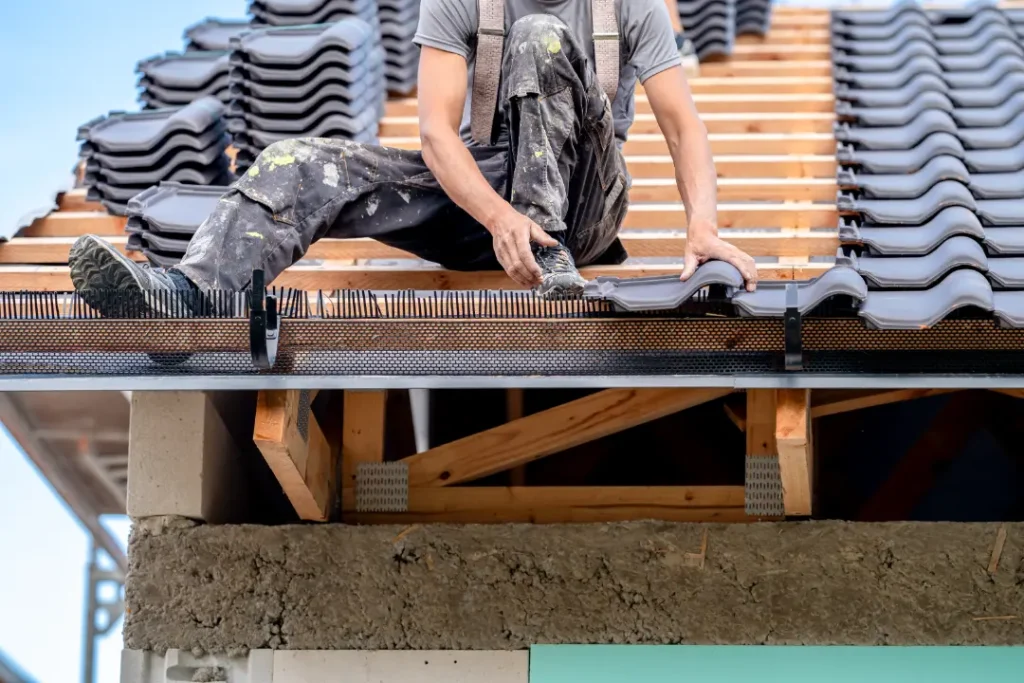
When to Call a Professional Roofer
Knowing when to call a professional roofer can save you from further damage and costly repairs. If significant structural damage has occurred due to leaks, a professional assessment is necessary. Considering the cost of repairs versus the potential need for a roof replacement is key to making an informed decision.
Addressing multiple leaks typically requires professional intervention, as they can employ advanced techniques to tackle the root causes effectively. Additionally, professionals can safely manage repairs on a steeply sloped roof that poses high fall risks.
In situations where water has compromised electrical systems, a professional should handle the repairs safely. Moreover, warranties on roof repairs provide assurance of quality workmanship and materials, benefiting homeowners. Consulting a professional can save time, ensure safety, and provide long-lasting solutions for your roofing issues.
Safety Precautions for Roof Repairs
It is always best to leave roof repairs and replacements to experts. Safety should always be the top priority during roof repairs. Before starting the repair, check the weather to avoid being caught in the rain while working on the roof. Identify hazards in the area, including power lines and unstable access points, before beginning the project. Avoid performing roof work in extreme weather conditions, as this can compromise safety and material integrity.
Utilize a roofing harness connected to a secure anchor point to prevent falls from heights. Ensure that ladders are stable and set on level ground to avoid falls while accessing the roof. Always work with a partner for safety and assistance when conducting roof repairs.
Maintain an organized and clean work area to minimize the risk of accidents. Store roofing materials close to the working area to reduce the risk of injury while retrieving supplies. Proper tool usage, such as ensuring safety mechanisms on nail guns, is also crucial. Following these safety precautions ensures a safe and efficient roof repair process.
Long-Term Solutions for Recurrent Roof Leaks
For homeowners facing recurrent roof leaks, long-term solutions are essential to maintain the integrity of your home. Roof leaks often occur due to missing shingles. Other causes include old flashing and areas that require repair with sealant, tar, or caulk.
If your roof is approaching the end of its lifespan, which is typically between 20 to 30 years, it may be time to consider a replacement. A roof replacement could also be necessary if the current roof was poorly installed.
Investing in a new roof can significantly increase your property’s value and appeal, protect the entire building, enhance your comfort, and provide you with peace of mind. Additionally, a new roof offers a long-term solution to ongoing issues.
Choose Xterior LLC for Roof Replacement and Repair in North Carolina
When it comes to roof replacement and repair, you need a contractor you can trust to deliver durable, high-quality results. At Xterior LLC, we specialize in roofing solutions that withstand North Carolina’s unpredictable weather, ensuring long-term protection for your home.
With years of experience, top-tier materials, and a commitment to customer satisfaction, we have built a reputation as a leading roofing company in High Point and Wilmington. We are Google Guaranteed, an Owens Corning Preferred Contractor, and have maintained an A+ rating with the BBB for over five years.
Our process begins with a roof inspection, followed by expert recommendations tailored to your needs. Whether you need a full roof replacement, storm damage repair, or a simple fix, we provide fast, reliable service with exceptional craftsmanship.
Beyond roofing, we offer complete exterior home solutions, including gutter installation, siding replacement, and window services. Our team ensures seamless integration of these components to enhance both the functionality and curb appeal of your home.
From repairing leaks to reinforcing your roof’s structure, we go above and beyond to deliver lasting results. Contact Xterior LLC today for a free estimate and experience the highest level of roofing expertise in Wilmington.
Frequently Asked Questions
What are common signs of a roof leak?
If you notice water stains on your ceilings or walls, or find wet spots in your attic, it’s a strong sign of a roof leak. Keep an eye out for missing shingles and damaged flashing too, as they can lead to bigger issues down the line.
How can I temporarily fix a leaking roof?
You can temporarily fix a leaking roof by covering the area with a tarp and securing it with roofing nails. Then, for minor leaks, you can use roof cement or sealant. This should keep things dry until you can make permanent repairs.
When should I call a professional roofer?
You should definitely call a professional roofer when you notice significant structural damage or multiple leaks or if your roof is steep and risky to work on yourself. It’s safer and ensures high-quality repairs with a warranty!
What safety precautions should I take during roof repairs?
Make sure to check the weather and avoid working in extreme conditions. Use a harness, secure ladders, work with a buddy, and keep your area organized to stay safe while repairing your roof.
How can I prevent recurrent roof leaks?
To prevent roof leaks, replace old shingles and flashing, invest in an ice dam shield, and schedule regular maintenance with professionals. Using quality materials is key to long-lasting protection!
Conclusion
Dealing with roof leaks requires a proactive approach, from identifying the source to implementing immediate and long-term solutions. You can minimize damage by taking immediate action to catch leaking water and protect your home’s interior. Temporary fixes and DIY tips can provide quick solutions, but regular maintenance and professional intervention are crucial for long-term leak prevention.
Remember, maintaining your roof is an ongoing process that requires attention and care. By following the tips and strategies discussed in this blog post, you can extend the lifespan of your roof and protect your home from water damage. Don’t hesitate to call our professional roofing services when needed for the best and lasting results.
